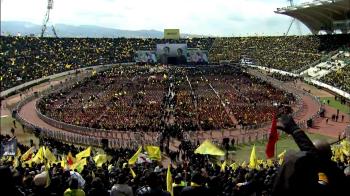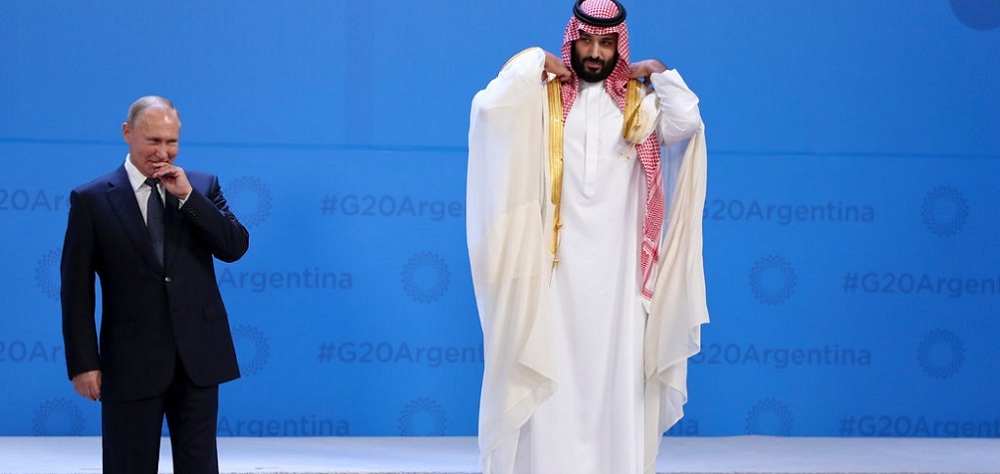Alwaght- Over the past month, the oil prices have been shockingly low for the crude producers. Since early January, the oil prices fell 30 percent and on Monday they fell 9 percent as the major oil suppliers, Russia and Saudi Arabia, failed to reach an agreement on massive supply cut. The Monday price was record low in 20 years.
The dropped demand for oil after the outbreak of the Coronavirus worldwide pushed the Chinese refineries to reduce their production. Moreover, April will mark the start of the overhaul season of the Asian oil refineries which means even farther drop of demands for oil. This is the biggest one-day oil prices collapse since 1991, the year the prices dropped 30 percent in a single day.
The emergency meeting of the OPEC and non-OPEC members, officially known as OPEC+, was held on Thursday in Vienna as the major suppliers struggled to prevent further freefall of the crude price in the global markets amid Coronavirus crisis that is hitting the whole world.
Reports said that Saudi Arabia urged massive supply cuts and called for non-OPEC suppliers to take a share in the cuts. Russia strongly rejected to reduce its share from the oil market.
The fresh difference among the oil producers can well be marked as the death of the OPEC+ alliance between Saudi Arabia and Russia. The two countries over the past two years have been engaged in coordination to balance the global oil markets. In a retaliatory move, Saudi Arabia‘s state-run oil giant Saudi Aramco said Tuesday it would increase its crude oil production to 12.3 million barrels a day in April, a record amount. Amid sagging oil prices, the Saudis seem to be planning to offer the highest discount in eight years to their Asian customers to save their share from the market.
But where does this Saudi-Russian difference stem from? Would it continue?
Russia’s hard resistance
Moscow’s insistence that it will not cut its oil production is the main drive behind the oil negotiations' failure. But why is Russia resisting while it knows that itself will sustain damage from low oil prices?
The Russian oil production rose to 10.835 million barrels a day in early March this year. This is while the country’s economic growth in January was reported 1.6 percent lower than the predicted 2.3 percent. This is the lowest growth rate since November 2019 amid decreased industrial production.
One reason for the Russian insistence is that Kremlin needs the oil money to balance its annual budget. If this theory is right, possibly Russia did not foresee the Saudi Arabian suicidal oil output hike despite the dropping oil prices. So, it is likely that the two oil market heavyweights will launch new talks to reach an agreement on the oil production threshold. Russia wanted an easy win in which more prices dropping will be prevented and Moscow will not need to cut its oil. But things did not go as Kremlin wished.
Another theory is about oil market behavior. Moscow said on Monday it could withstand oil prices of $25-$30 per barrel for 6-10 years. The ministry of finance said that the National Welfare Fund’s resources are enough to cover the government commitments and budget deficit between 6 and 10 years once prices drop to below $30 per barrel.
Under this theory, Russia wants to increase its share from the global oil markets, a share has been decreasing as a fresh supplier, the US, stepped strongly in the market since 2017. The US, thanks to its technological development, managed to mass-produce shale oil and has been pushing hard with all instruments at its disposal to wrest from oil rivals their shares in the oil market. The pressures range from waging trade wars on major oil buyers in Europe to imposing sanctions on big oil producers like Russia, Iran, and Venezuela. Since mid-2019, the US pressed with a variety of pressures and sanctions to block construction operations of the Nord Stream 2 gas pipeline from Russia to Germany. As a result, Russia’s oil and gas giant Gazprom lost its position in the European market.
Russia knows that beating the shale oil industry and retaliating against the US oil war is possible only via low oil prices.
Kiril Kononov, a Gazprom’s lead analyst, says that with lower than $50 for an oil barrel, half of the American continent's oil production will be uneconomical and the American oil companies will move to the brink of bankruptcy.
The crash of the oil prices will leave the US shale oil industry grappling with a three-faceted crisis: the production will be uneconomical, the shareholders will rush to sell their shares in the shale oil companies, and the industry's owners will be crushed under huge debts.
Although the theory of the Russian intention to put strains on the US is seriously visible at the time, it will be a time-taking process. Long-term low oil prices can be severely detrimental to the Russian economy. The Russian currency ruble’s value loss is just one of the damages. However, the Russian ministry of finance in a statement assured that it can manage the situation and prevent ruble value’s crash. The statement assured that the National Welfare Fund’s reserves are enough to guarantee fulfillment of the government commitments and economic stability. It further said that it was ready to manipulate the currency market to prevent more ruble value loss should President Vladimir Putin order.
The defenders of the first theory argue that these comments by Moscow officials are just propaganda to be used for the OPEC+ oil negotiations that would be unavoidably resumed soon. They add that if Moscow was not willing to prevent oil prices fall, it saw no necessity to take part in the recent emergency OPEC+ meeting.



























